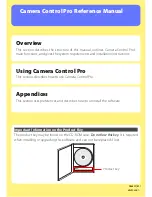
Chapter 2 – Concepts
24
File Group 3 contains all other files saved to the folder \project2\. These are
retained online on magnetic disk for 24 hours after they were written or last read.
They are also saved to tape to another Volume Set called “Tapes02.”
A file cannot be written to the system if a File Group is not present that matches its file
name and path. In the example above, files can only be stored if written to the folders
\project1\ or \project2\ of if they have a name of the form *.tmp. Attempts to write
other files is not permitted. If appropriate, the system can be configured with an
additional “catch all” File Group that sets a policy for all other files.
File Group characteristics are defined by the administrator using the Archive
Management Console. The following parameters must be defined for each File Group:
File name or path pattern for the File Group. This, together with the relative
position of the File Group in the Archive Management Console display, defines the
files allocated to this File Group.
The position of the File Group relative to other File Groups in the Archive
Management Console display, which defines the order in which file name or path
pattern selection is applied. If a file name matches the selection criteria for more
than one File Group, it will be assigned to the first matching File Group.
Enable or disable Save all files to tape.
Selection of a Volume Set, if the File Group is saved to tape.
Enable or disable file fragmentation. If enabled, set the fragment size. File
fragmentation must be enabled to provide partial file restore and cartridge
spanning.
Retention periods on magnetic disk, if the File Group is saved to tape.
The policies defined by the administrator determine how files are stored on disk and
tape. The policies do not change folders or files within the Windows file system. For
example, folders cannot be created by using File Group rules; new folders are created
by using standard utilities like Windows Explorer.
Constructing the File Name, Path Pattern, or Exclude Pattern
Whenever a program creates a file, the nTier File Migrator software needs to know
how to treat it. The way the file should be handled is defined by File Group rules, so
the first thing the system does when a file is opened or created is to allocate it to a File
Group.
Содержание Spectra nTier File Migrator
Страница 1: ...Spectra nTier File Migrator User Guide PN 90990032 Revision A...
Страница 4: ...Contacting Spectra Logic 4 Notes...
Страница 22: ...Chapter 1 Overview 22 Notes...
Страница 34: ...Chapter 2 Concepts 34 Notes...
Страница 78: ...Chapter 5 Using nTier File Migrator 78 Notes...
















































